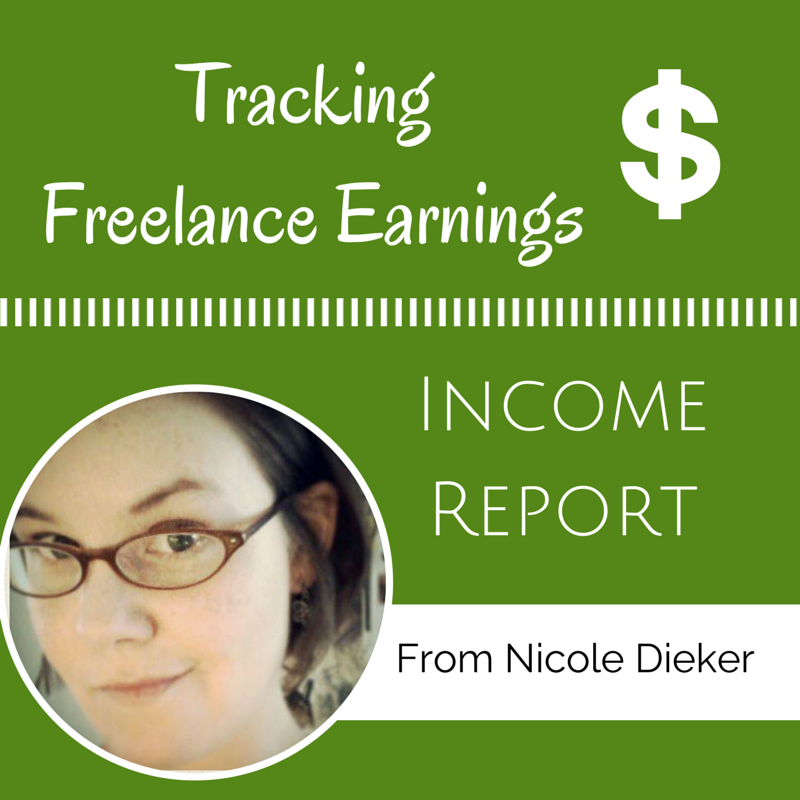Hi! If you’re new to this column: I’m tracking my freelance income every month and sharing it with all of you.
This is my third year of public income tracking, and my first year sharing my income with The Write Life.
It’s time to look at March’s numbers:
Completed Pieces: 90
Work Billed: $5,128.00
Earnings Received: $5,539.41
March’s income is just over my $5,000/month goal, and is significantly higher than what I was earning at this time last year. In March 2014, I billed $3,583.39 for 119 pieces. Now, I’m earning a lot more for a smaller workload.
Here are a few more quick stats for you: I wrote just over 65,000 words this month, and my average earnings per piece comes to $56.98. My highest per-piece earning is still $300, and my lowest is still $50.
Tracking my hours during the workday
This month, my earnings received were higher than my earnings billed, due in part to all the long hours I put in at the beginning of the year so I could take a vacation. In March, I earned over $5,000 without the extra work or the long hours, thanks to that new client I picked up at the end of January.
How many hours do I work every day? In general, I work from about 9 a.m. to about 7 p.m., which gives me a 50-hour workweek. I often stop in the early afternoon on Friday, but make up the hours on Sunday night writing pieces that’ll run at the beginning of the next week.
A 50-hour workweek sounds like a lot, so I decided to spend one week in March time-tracking my hours to see how I was actually spending my time. I used Toggl, which I recommend. Here’s what I learned:
On an average workday, I spend between four and five hours writing. On Monday, March 16, for example, it took me four hours and 45 minutes to write five pieces totaling 3,600 words.
I also spend between one and two hours doing administrative work. This includes emails, checking in with editors, sending invoices and scheduling my upcoming workload. I expected to learn that I was spending much more time “doing email” because it feels like email is never-ending, but it turns out to be only a small part of my workday.
I spend two hours every day reading the Internet. In fact, the first hour of my workday — before I write anything, and before I tackle any but the most important emails — is spent reading other websites and catching up on the latest news and ideas. I read a wide variety of sites, from Business Insider to The Atlantic to The Toast and Buzzfeed. I consider this work essential to my career as a writer, because it keeps me informed and teaches me what other publications and readers find interesting.
Social media work is sprinkled throughout the workday, and I did not track it separately. In many ways, having a quick conversation with someone on Twitter or Facebook is analogous to having a quick chat with a person who stopped by your desk. I often do a quick social media pass between tasks, in that I’ll finish writing a piece and then check Twitter, Facebook and Tumblr before starting the next item on my to-do list.
With a 30-minute break for lunch, it’s easy to see how this can add up to a nine or 10-hour workday. Do I want to make my workdays shorter? Sure, but it isn’t a priority right now. I feel comfortable managing the work that I have, and very happy that I am increasing my earnings.
Creating a savings plan for estimated taxes
April is a big tax month for freelancers, since year-end taxes and first quarter estimated taxes are both due on April 15. Last month, I learned that significantly increasing my earnings over the past year — remember, I was only billing $3,500 last March — meant owing a lot more in 2014 taxes than my accountant (CPA) and I had previously estimated. $5,443 more, to be exact.
So I asked my CPA what I could do to make better estimations for 2015. Following his recommendations, I’ve decided to set aside a flat 20 percent of my earnings for taxes. This means that if my earnings continue to grow, I’ll be able to adjust my estimated tax payments accordingly and won’t get stuck with another big tax bill at the end of the year.
I live in Washington State, which means I do not pay state income tax, and it also means that my 20 percent savings plan may be a little different from what you’ll need to save for your own estimated taxes. Talk to your own CPA to find out what’s right for you, and ask your CPA how you can plan ahead for income variations throughout the year.
It looks like April will be pretty similar to March, work-wise. I have a slate of great clients and a bunch of work already scheduled — and I’ve definitely hit the goal I set at the beginning of this year of earning at least $5,000 per month. So now I’m wondering: How long should I ride this wave before setting myself a new goal?
How many hours a day do you spend writing? And how much money do you set aside as a freelancer for your estimated taxes?
Want to learn how Nicole has come this far in her freelance career? Check out her past income reports for The Write Life:







